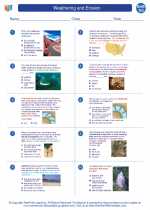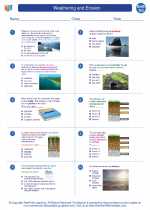Ecological Succession
Ecological succession is the process by which the structure of a biological community evolves over time. It describes the gradual and predictable changes in the composition of species and the structure of an ecological community as a result of changes in environmental conditions. Succession can occur in a variety of ecosystems, including forests, grasslands, and aquatic environments.
Types of Succession
There are two main types of ecological succession: primary succession and secondary succession.
- Primary succession: This type of succession occurs in an area that has never been colonized by living organisms. It typically begins with the colonization of bare rock or barren land by pioneer species such as lichens and mosses. Over time, these pioneer species create soil through the process of weathering and organic matter deposition, allowing for the establishment of more complex plant and animal communities.
- Secondary succession: Secondary succession occurs in an area that has previously been inhabited by living organisms but has undergone a disturbance, such as a fire, flood, or human activity. In this type of succession, the soil is already present, and the process begins with the reestablishment of plant and animal communities in the disturbed area.
Stages of Succession
Ecological succession typically progresses through several stages, which may include:
- Pioneer stage: This stage is characterized by the establishment of hardy and adaptable pioneer species that are able to colonize and survive in harsh, inhospitable environments. These species often have unique adaptations that allow them to thrive in such conditions, such as the ability to fix nitrogen or tolerate extreme temperatures.
- Intermediate stage: As the pioneer species modify the environment and create soil, they pave the way for the establishment of more diverse and complex plant and animal communities. This leads to the development of a more stable and diverse ecosystem, with increased competition for resources and the emergence of more specialized species.
- Climax stage: The climax community represents the final stage of succession, where a relatively stable and self-sustaining ecosystem has been established. The dominant species in the climax community are well-adapted to the prevailing environmental conditions and exert significant control over the community structure.
Factors Influencing Succession
Several factors can influence the process of ecological succession, including:
- Disturbance: The frequency and intensity of disturbances, such as wildfires or human activities, can greatly impact the trajectory and pace of succession.
- Climate: Climatic conditions, such as temperature, precipitation, and seasonality, play a significant role in shaping the progression of succession in a particular ecosystem.
- Soil development: The formation and development of soil are critical for providing the necessary nutrients and support for plant growth, thereby influencing the types of species that can establish themselves in an area.
- Species interactions: The interactions among species, including competition, predation, and mutualism, can shape the composition and structure of communities during succession.
Human Impacts on Succession
Human activities, such as deforestation, urbanization, and agriculture, can significantly alter natural successional processes. By understanding the principles of ecological succession, we can better manage and restore ecosystems that have been affected by human-induced disturbances.
Study Guide:
Here are some key concepts to focus on when studying ecological succession:
- Define ecological succession and distinguish between primary and secondary succession.
- Describe the stages of succession, including the pioneer, intermediate, and climax stages.
- Explain the factors that influence the process of succession, such as disturbance, climate, soil development, and species interactions.
- Discuss the role of human activities in impacting natural successional processes and the importance of conservation and restoration efforts.
- Explore specific examples of succession in different ecosystems, such as forests, grasslands, and aquatic environments.
By understanding the principles of ecological succession, we can gain valuable insights into the dynamics of ecological communities and the ways in which they respond to environmental changes over time.
[Ecological Succession] Related Worksheets and Study Guides:
.◂Earth Science Worksheets and Study Guides High School. Weathering and Erosion

 Worksheet/Answer key
Worksheet/Answer key
 Worksheet/Answer key
Worksheet/Answer key
 Vocabulary/Answer key
Vocabulary/Answer key
 Vocabulary/Answer key
Vocabulary/Answer key
 Vocabulary/Answer key
Vocabulary/Answer key
